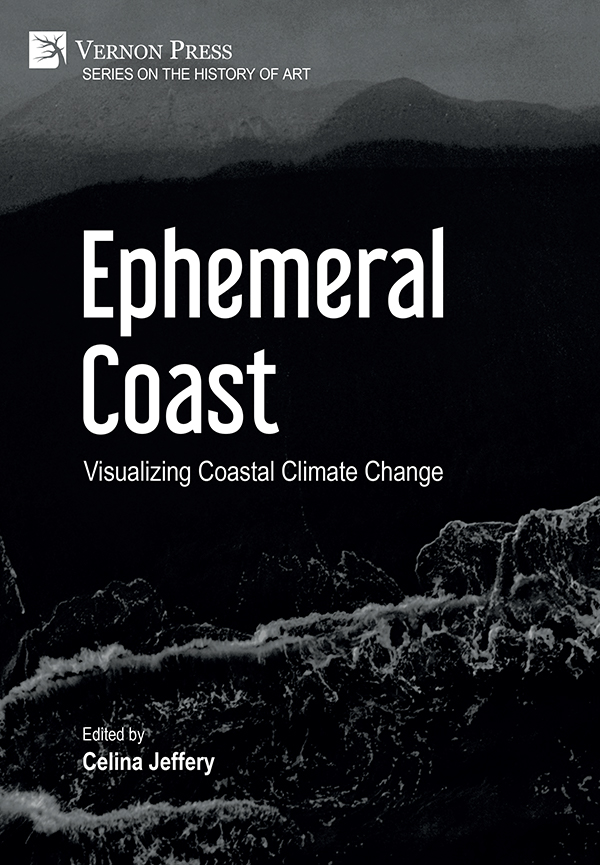New book on art and coastal climate change contains essay by Assoc. Prof. Catherine Bonier
June 10, 2022
An essay by Associate Professor Catherine Bonier has been published as a chapter in a new book, Ephemeral Coast: Visualizing Coastal Climate Change.
Bonier’s essay, Woven Imaginations: Stories of fluidity and fixity in coastal Louisiana, takes the waters of coastal Louisiana as its starting point, considering the webs of living things, systems, and structures that exist below, above, and within the Mississippi Delta’s moving edges.
With a focus on infrastructural and socio-environmental history, her essay critically evaluates the ways particular lenses and logics contribute to the escalating vulnerability of the Mississippi River Delta and Louisiana’s Gulf Coast
The book, edited by Associate Professor Celina Jeffery of the University of Ottawa, considers how art can offer a means to discover, analyze, re-imagine and re-frame emotive discourses about the ecological and cultural transformations of the coastline.
Published by Vernon Press, it presents a series of specific case studies of artistic practices and strategies that seek to capture the rewriting of cartographic maps reshaped by rising seas, coastal flooding, and catastrophic weather.

The anthology presents a series of essays by the following scholars: Diana Heise (Kansas City Art Institute), Catherine Bonier (Carleton University), Celina Jeffery (University of Ottawa), Belinda Du Plooy (Nelson Mandela University), Anna Paluch (Carleton University), Sherena Razek (Brown University), Jakub Zdebik (University of Ottawa), Ian Buchanan (University of Wollongong), and Andrea Hurst (Nelson Mandela University.)
ABSTRACT: Woven Imaginations: Stories of fluidity and fixity in coastal Louisiana
This essay takes the waters of coastal Louisiana as its starting point, considering the webs of living things, systems, and structures below, above, and within the Mississippi Delta’s moving edges.
This mobile coast is the ground for all life and livelihood in Southeastern Louisiana — the source of cultivation and extraction, celebration, and settlement. The region is characterized by the impossibility of straight lines, the daily loss of land, and the devastating failures of rigid engineered water-control structures.
If water underlies all life in this region, the violent legacy of slavery, racism, white supremacy and social injustice permeates the networks that bind human and non-human life and health in this complex terrain. The stories, cycles, living beings, and material practices that connect the vastly disparate scales and shifting edges of the Louisiana coast are bound together by relationships that are difficult to visualize, hydraulic and social dynamics that were partly submerged long before climate change was recognized as an existential threat.
Questions of vision and imagination — how to see, understand, and protect coastal Louisiana — have been undertaken with greater urgency over the decade and a half since Hurricane Katrina. With a focus on infrastructural and socioenvironmental history, this essay critically evaluates the ways particular lenses and logics contribute to the escalating vulnerability of the Mississippi River Delta and Louisiana’s Gulf Coast. Inspired by the thought and work of Anuradha Mathur, Dilip da Cunha, and Monique Verdin, this essay argues for future imaginations rooted in the complex and nuanced understandings of the communities most closely interwoven with ephemeral coastal ecologies.
ABSTRACT: About Ephemeral Coast: Visualizing Coastal Climate Change
Ephemeral Coast: Visualizing Coastal Climate Change considers the ways that art can offer a means through which to discover, analyze, re-imagine and re-frame emotive discourses about the ecological and cultural transformations of the coastline.
This edited anthology takes ephemerality as its central conceptual and methodological framework and presents a series of essays that create interconnections between environmental and social considerations of the coast, a succession of embodied creative practices, and shifting regional geographic identities.
The book presents a series of specific case studies of artistic practices and strategies that seek to capture the rewriting of cartographic maps that are being reshaped by rising seas, coastal flooding, and catastrophic weather.
The essays in this edited volume engender creative strategies for understanding new and uncertain coastal ecologies and the loss, expulsion, or destruction of their associated cultures, habitats, species, and ecosystems. The anthology also looks at the historical, mnemonic, and contemporary, transitional conditions of ‘conflicted’ coastal spaces in which empire, modernity, and globalization press on coastal erosion and incursions, proliferate it with trivial plastics, pollution, and disposable attitudes, and bring vulnerable communities into uncertain futures.
About Catherine Bonier

Catherine Bonier teaches courses in architectural and urban design, research, history, and theory. The foundation of her teaching is the analysis of historical systems and patterns as the basis for creative visualizations to imagine equitable and remediative future cities.
Bonier’s research spans historical analysis to futuristic visions and centres on the shaping of the built environment around water, technology, infrastructural systems, and competing ideas of health and balance. Her prior positions in construction management, mental health counseling, and video game design contribute to her focus on the nexus of evolving technologies, shifting environments, social equity, and urban health. She is co-director and co-founder of the Carleton Urban Research Lab (c-url) with Associate Professor Ozayr Saloojee.